Travel to Portugal
Day 4 Coimbra, Batalha, Alcobaça (322 Km.)
(in 91 km.) Coimbra: We parked in the parking lot located in the Manuel Braga park, next to the Mondego river, and we walked to Largo de Portagem. Coimbra is a city crossed by the Mondego River, with narrow streets, patios, stairs and medieval arches. Largo de Portagem is the main square, as well as the center of the city of Coimbra. In this square we find one of the architectural symbols of the city of Coimbra, the Astoria hotel, built in 1926, the Banco de Portugal building in Coimbra and the statue of Joaquim António de Aguiar. From this square starts the commercial Rua Ferreira Borges, a pedestrian street through which we can visit the Baixa neighborhood.
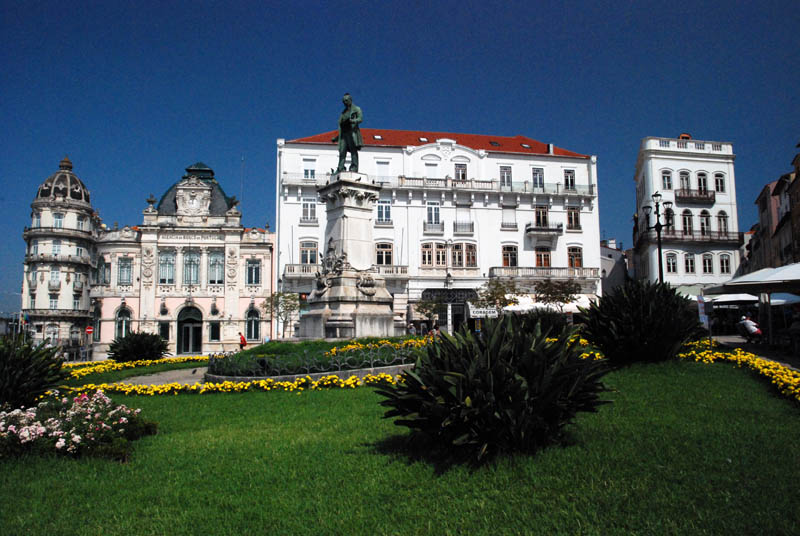
Coimbra - Largo de Portagem
Our first stop is at Praça do Comércio, one of the most beautiful squares in the city, in which the Church of São Tiago stands out, built between the end of the 12th century and the beginning of the 13th century, one of the great Romanesque monuments of the city. On the outside of the church, the main and south side portals stand out. On the other side of the square we see the igreja de s. bartolomen. We continue again along Rua Ferreira Borges until we reach Praça 8 de Maio, where we find the Mosteiro de Santa Cruz. The Monastery of the Holy Cross, because the first two kings of Portugal are buried in the church, it was granted the status of National Pantheon.
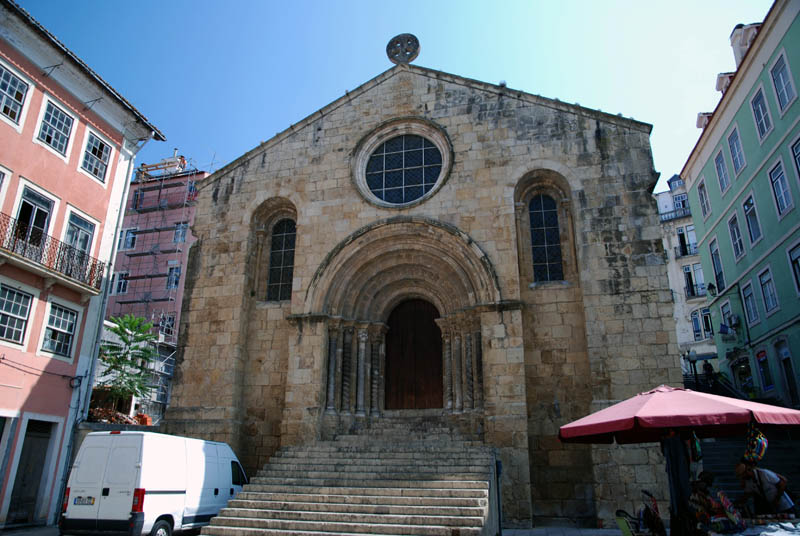
Coimbra - Church of São Tiago
Founded in 1131 outside the protecting walls of Coimbra, the Santa Cruz Monastery was the most important monastic house during the early days of the Portuguese monarchy. The monastery and church were erected between 1132 and 1223. The monastery was granted numerous papal privileges and royal grants, which allowed the accumulation of considerable wealth. The main portal, built between 1522 and 1525 under Chanterene, is the most emblematic piece of the whole monastic ensemble, harmonising the artistic elements of the Manueline with other features from Renaissance inspiration. The sacristy dates back to the 17th century and keeps some notable 16th-century canvases.
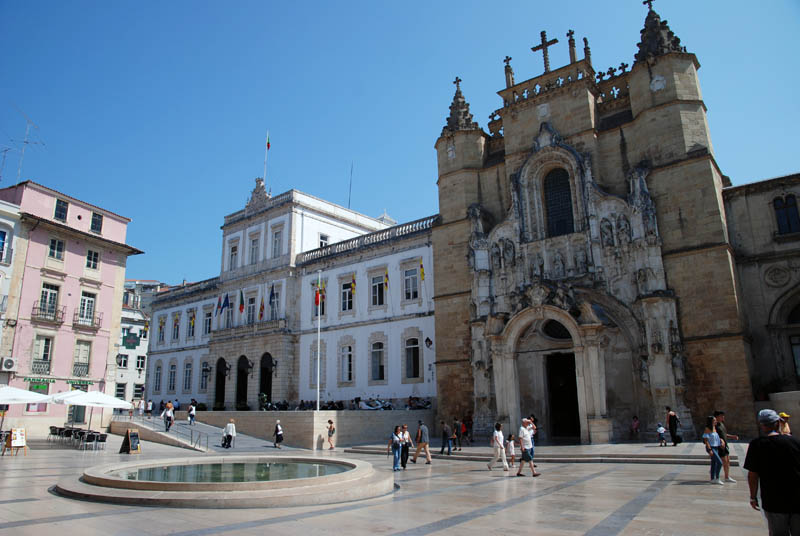
Coimbra - Mosteiro de Santa Cruz
Behind the monastery we find the curious Jardim da Manga, built in the XVI century in Renaissance style, it is characterized by a central body in the shape of a dome, which rests on eight columns and surrounded by four small chapels. Emphasize the water games inspired by the Arab architecture. We go back again along the Rua Ferreira Borges to the door and tower of Almedina, the main entrance of the city inside the walls. It is accessed from the door of the Barbacã, and allows us to access the upper neighborhood of Coimbra. The Old Cathedral of Coimbra (Sé Velha de Coimbra) is one of the most important Romanesque Catholic buildings in Portugal. Seen from the outside it looks like a small castle, with high walls crowned with battlements. The appearance of strength is common to the cathedrals of the time and is explained by the warlike climate of the reconquest.
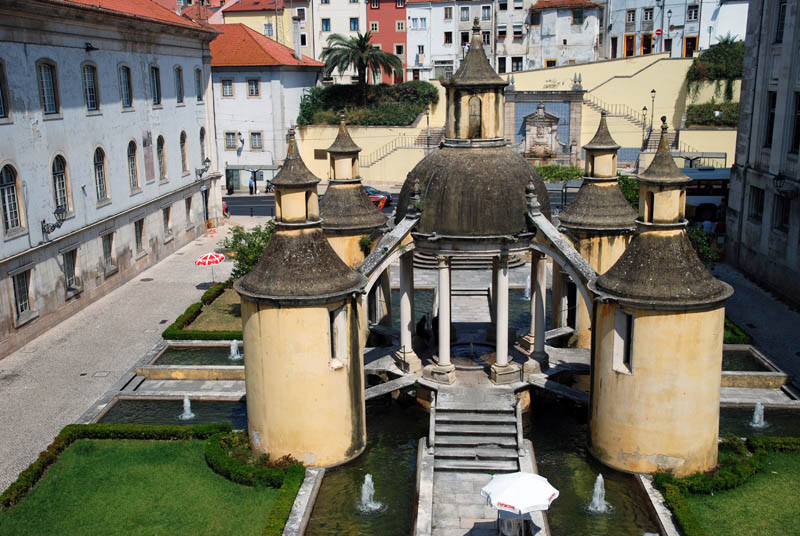
Coimbra - Jardim da Manga
We continue ascending until we reach the University of Coimbra, founded in 1290 and declared its campus in 2013 a World Heritage Site by Unesco. We enter through the Iron gate, crowned by the representation of Wisdom, to the courtyard of the university, in which the Via Latina stands out, with its central portico formed by a colonnade and a white limestone staircase, which runs along the main facade of the former Royal Palace, between the seventeenth century palace and the tower of the eighteenth century. Also worth mentioning are the San Miguel chapel and especially the Joanina Library, erected in the 18th century in a markedly Rococo style, being recognized as one of the most original and spectacular European Baroque libraries (it appears in the film Beauty and the Beast of 2014).
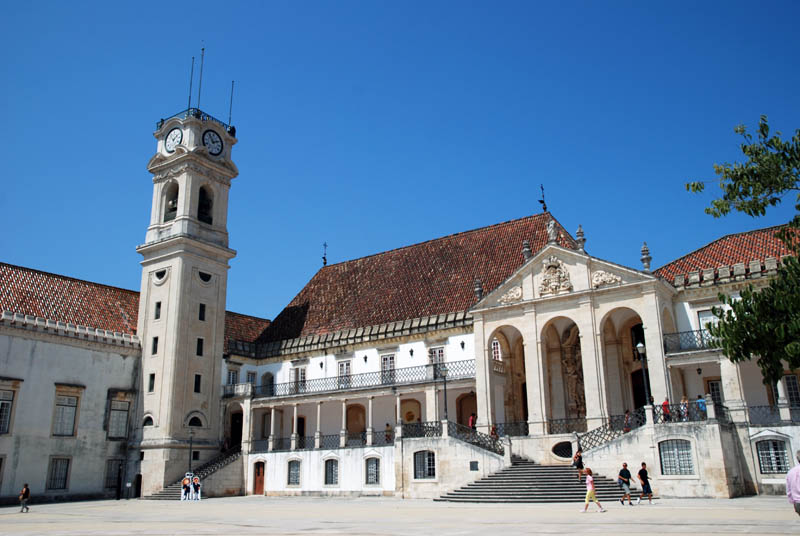
Coimbra - University
(in 84 km.) Batalha: We visited the Convent of Santa Maria da Vitória (also known as Monastery of Batalha), one of the best and most original examples of late Gothic architecture in Portugal, mixed with the Manueline style. The monastery took two centuries to be built, starting in 1386 and ending in 1517. The so-called Capelas Imperfeitas (Unfinished Chapels) remain as testimony that, really, the monastery was never finished. The famous Sala do Capítulo stands out, with a square floor plan, covered by a star vault of a single flight, the Capela do Fundador, where the mausoleum of the kings Juan I and his wife Felipa de Lancaster rises.
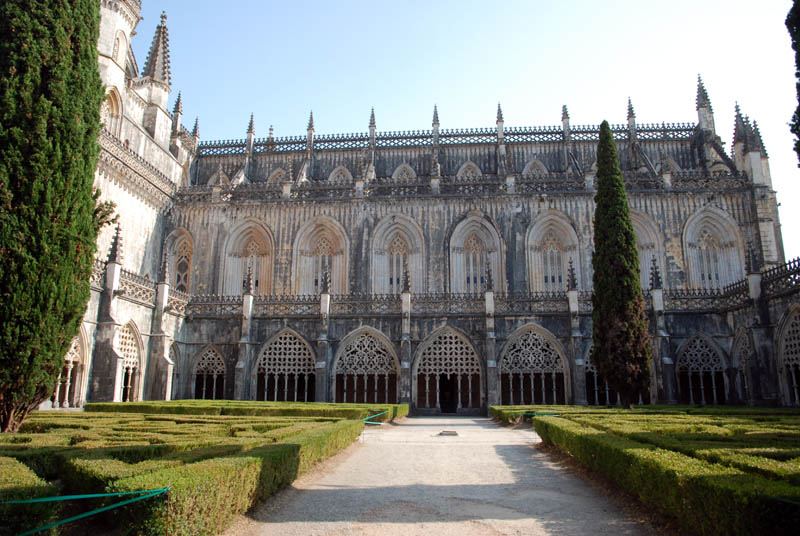
Batalha monastery
The portico, built in 1509, shows in the archivolt a profusion of 78 statues, divided into six rows, of kings and queens of the Old Testament, prophets, saints and angels, some with medieval musical instruments. In Latin cross plan, the church is formed by 3 naves, with a pronounced transept and five chapels in the head. It is 80 meters long and 22 meters wide. Another highlight of the visit is its two cloisters, that of Dom Alfonso V and especially the so-called Royal Cloister, in a sober Gothic style close to the Renaissance, but with Manueline additions by Diogo de Boitaca. In 1983 it was incorporated by Unesco into its list of World Heritage sites.
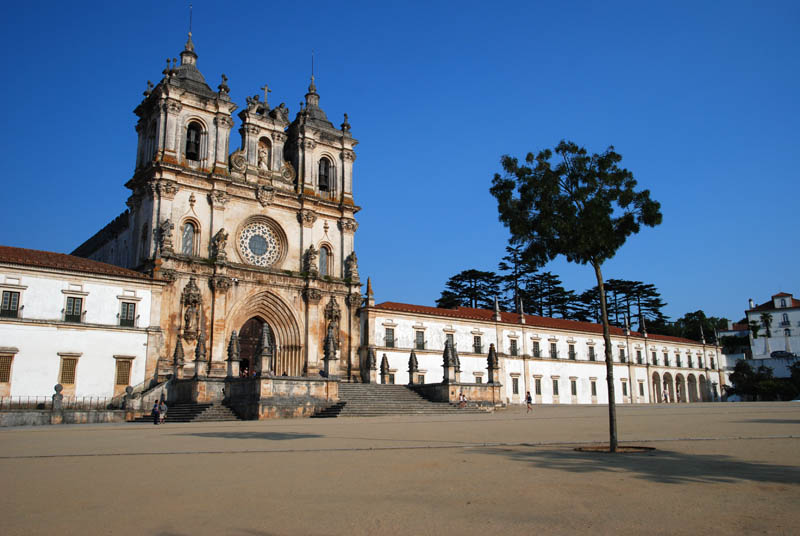
Alcobaça monastery
(in 24 km.) Alcobaça: Alcobaça is known for its Cistercian monastery, around which the towns of the region developed. The monastery was founded by order of Alfonso I of Portugal in the year 1148, and was completed in 1222, in Gothic style with Moorish influences. During the Middle Ages, it came to rival other large Cistercian monasteries in Europe; the preserve of Alcobaça was one of the largest private domains within the kingdom of Portugal, encompassing several of the neighboring municipalities of Alcobaça such as Nazaré. It is considered a World Heritage Site by Unesco since 1989. In the monastery are the tombs of King Pedro I of Portugal (1357-1367) and his lover Inés de Castro.
(in 123 km.) Rio de Mouro: We are going to sleep in this town near Sintra.